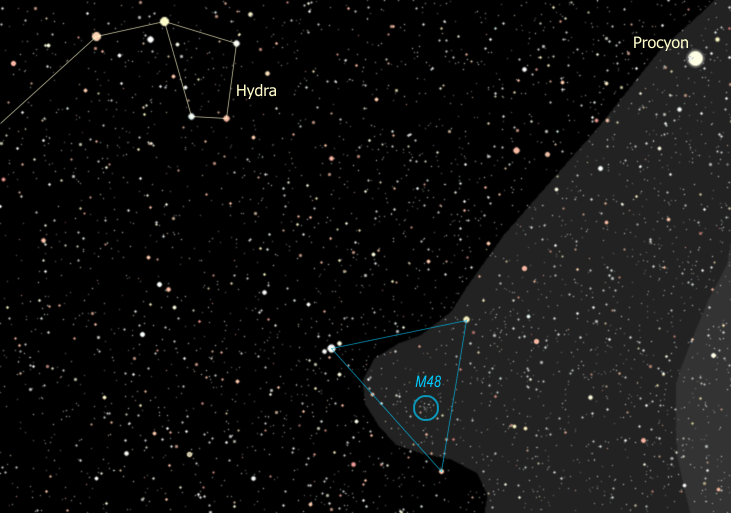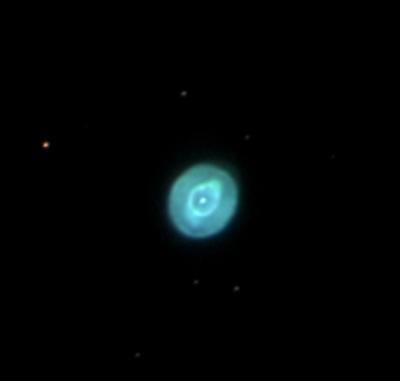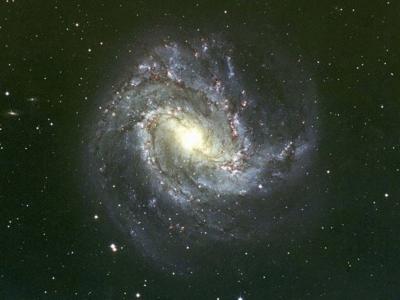
Hydra the Sea Serpent


|
Hydra the Sea Serpent |

|


Astronomers measure star brightness using 'magnitudes' -- Capella has a magnitude of 0, Pollux has a magnitude of 1, Alphard has a magnitude of 2. As magnitude number goes up, brightness goes down. A magnitude 1 is 2½ times as bright as a magnitude 2, a 2 is 2½ times as bright as a 3, and so on.
This comes from the system set up by ancient Greeks, where the brightest stars were stars of the first magnitude, like 'first class', and the faintest stars you could see were stars of the sixth magnitude. When astronomers got telescopes and instruments that could measure star brightness, they found 1st magnitude stars were almost exactly 100 times the brightness of 6th magnitude stars. That works out to a factor of 2½ from one magnitude to the next.
Magnitudes can go negative for stars brighter than 0 magnitude Capella. Sirius, the brilliant winter star that is now setting on the western horizon, is the brightest star anywhere in the sky (any time of the year) with a magnitude -1.5.
Well, what's really the brightest star in the sky? The sun has a magnitude of -27.
Yup, that's right. Different colors show different temperatures. So which star color is the hottest? Just like a flame, blue is the hottest part, yellow is next, red is the coolest. The sun is a yellow star, about 10,000°F at the surface. A red star is about half the sun's surface temperature, whereas a blue star is three to five times as hot as the sun. White stars like Sirius are somewhere between the yellow ones and blue ones.
Now, all stars are made of pretty much the same stuff -- about 90% hydrogen and the rest is helium with some traces of other stuff. So, why would one star be burning hotter than another? The answer is in the size of the star. The more massive it is, the more pressure there is at the center and therefore the hotter - and for that matter the brighter - the star burns. So blue stars are the biggest and brightest of stars, and red stars are the smallest and dimmest.
So why is red Alphard so bright? Hmmm... yeah... well, like with most rules, there are exceptions to the rule, and this rule is no exception. Alphard is a star that is literally running out of gas. As a star burns up all the hydrogen at its center, it starts to burn helium (which is the "ash" from the hydrogen burning), which makes it expand, get brighter, and turn red -- it becomes a red giant. This is the time you can get a bright red star, when the star is near the end of its life.
When our sun starts burning out it will expand so big it will swallow up Mercury and Venus and scorch the surface of the earth to a cinder. If you are hoping to see all that happen you will have to wait about 5 billion years.
So there are two reasons a star could be red -- it is massive (and once was yellow, white or even blue) and is now burning out (a red giant), or it never had enough mass to burn any hotter than red (a red dwarf).

Notice that when we graph out the stars showing their temperature (or color) against their brightness, most of them fall along a line -- this line is called the Main Sequence, and the graph is called the "H-R" (for Hertzsprung-Russell) Diagram. Others are not on the main sequence, mostly stars that are either just being born (called "T-Tauri" stars) or stars that are near the end of life.
| Ghost of Jupiter in Telescope | What you're looking at |
 |
 |

So why is it a crow if it doesn't look like one? Well, it fits with an ancient fable wherein Apollo gives a crow his cup and sends him for water (he's a god - he can send a bird to get water for him... in a cup... and somehow it's supposed to work out). Well the crow stopped to eat some figs -- well, actually, he waited for them to ripen first -- so he came back really late. He tried to get out of it by telling Apollo that a serpent held him up, but Apollo wasn't fooled, so he placed the crow and the cup in the sky along with the serpent, with instructions to the snake to keep the cup just out of the crow's reach.
| The Sombrero Galaxy from the Hubble Telescope | The magnificent spiral galaxy M83 |
 |
 |
 Back to Gemini
Back to Gemini
|
 Go to Spring Index
Go to Spring Index
|
 On to the Constellation Virgo
On to the Constellation Virgo
|
Your questions and comments regarding this page are welcome.
You can e-mail Randy Culp for inquiries,
suggestions, new ideas or just to chat.
Updated 11 November 2011